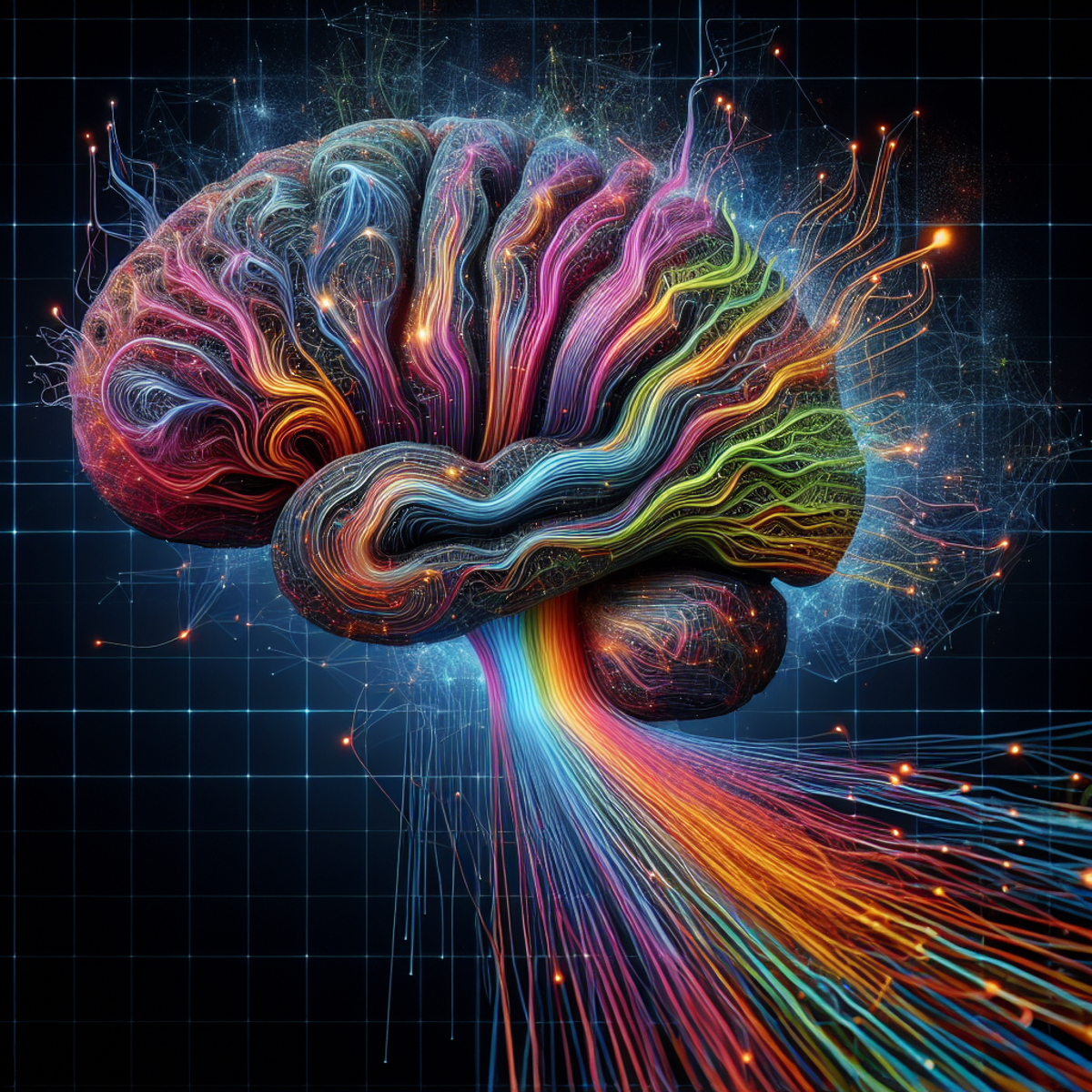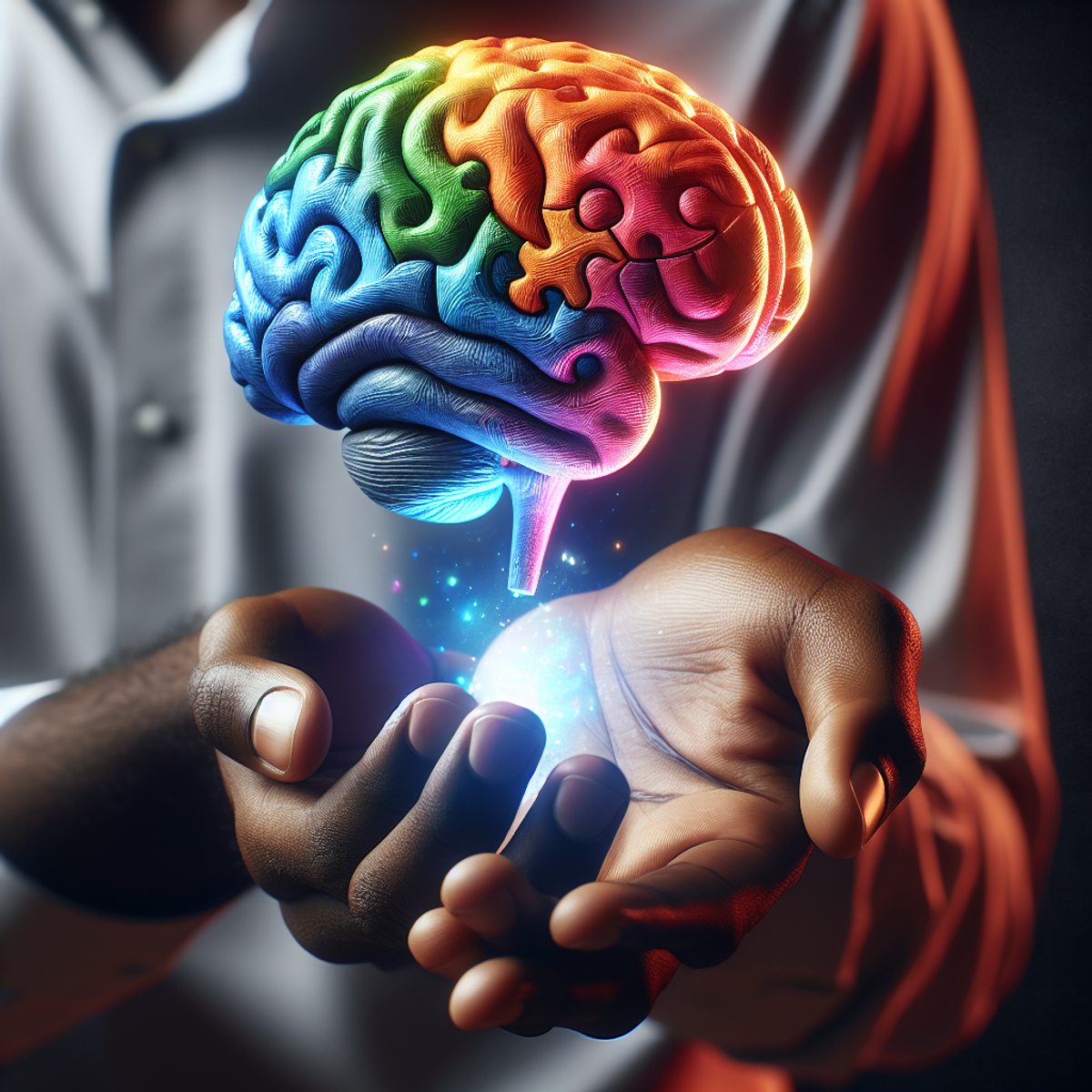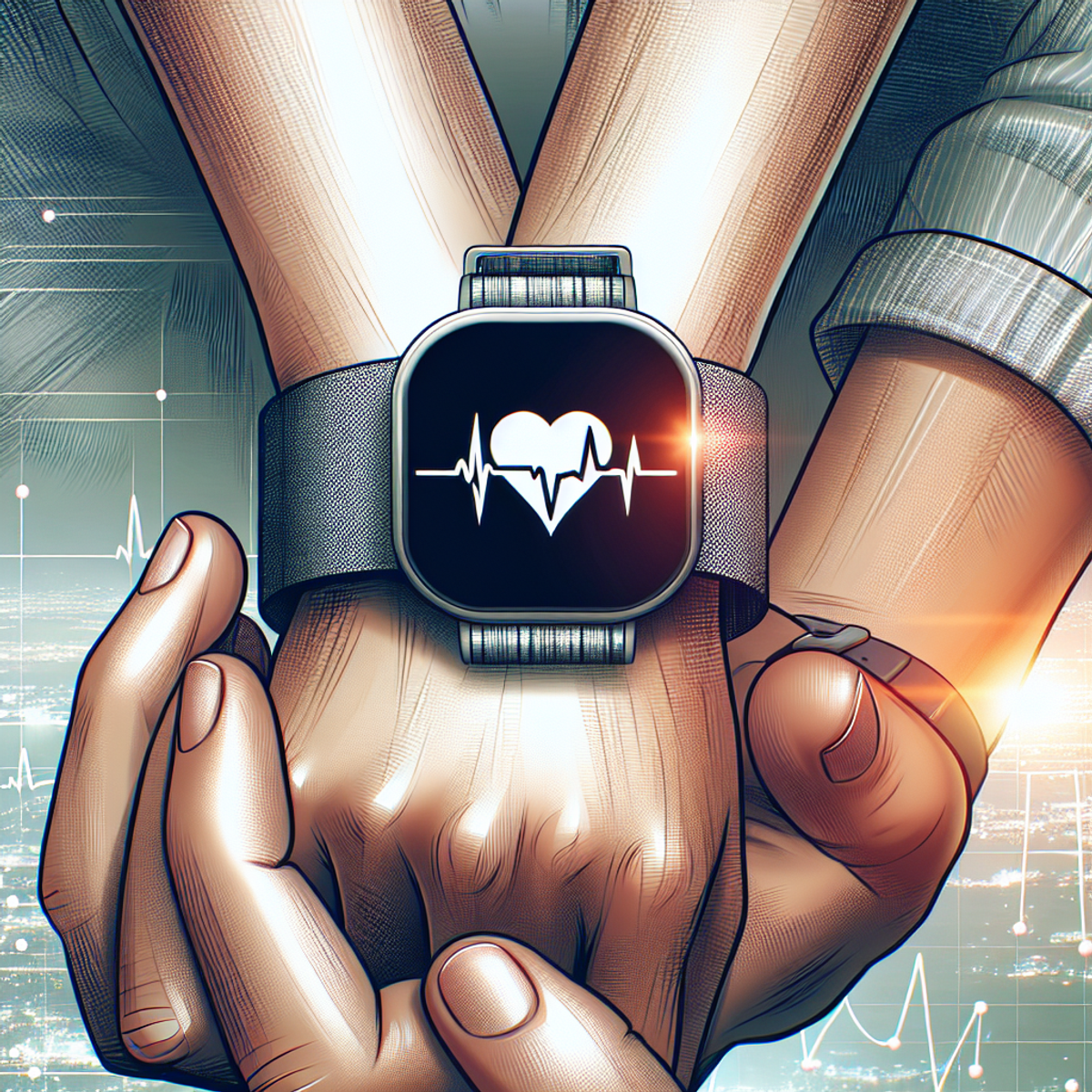Python for Mental Health Monitoring

Python for Mental Health Monitoring
Introduction
Python, a versatile and powerful programming language, is playing a significant role in revolutionizing the field of mental health monitoring. With its extensive libraries and frameworks, Python provides a robust platform for building real-time monitoring systems that are essential in the context of mental healthcare. In this article, we will explore the advantages of Python in mental health monitoring and delve into the various aspects of its application.
The Significance of Real-Time Monitoring Systems
Real-time monitoring systems have become increasingly crucial in mental healthcare. These systems enable healthcare professionals to continuously monitor patients' mental health conditions, allowing for early intervention and timely treatment. Python's flexibility and ease of use make it an ideal choice for developing such systems.
The importance of real-time monitoring systems cannot be overstated. Mental health conditions can often escalate rapidly, necessitating immediate attention. By leveraging Python to build real-time monitoring systems, healthcare providers can gain valuable insights into patients' mental states and intervene promptly when necessary.
Advantages of Python in Mental Health Monitoring
One of the key advantages of using Python in mental health monitoring is its vast array of libraries and frameworks specifically designed for data analysis and visualization. These tools enable healthcare professionals to process large volumes of data generated by real-time monitoring systems efficiently. With Python, they can extract meaningful patterns and trends from the data, empowering them to make informed decisions about patient care.
Moreover, Python's ability to integrate with wearable sensors has opened up new possibilities in mental health monitoring. Wearable sensors provide continuous data capture related to various aspects of mental health, such as anxiety levels, sleep quality, and physical activity. Python allows for seamless integration between wearable sensor data and mental health interventions, enabling personalized treatment plans based on real-time information.
Handling large volumes of data generated by wearable sensors can be challenging. However, Python's robust data processing capabilities help address these challenges effectively. Its libraries for data manipulation, such as NumPy and Pandas, allow for efficient analysis and interpretation of wearable sensor data.
Ensuring Privacy and Security
Privacy and security are paramount when dealing with sensitive healthcare data. Python provides encryption and anonymization techniques that ensure the protection of patients' privacy while allowing for meaningful analysis of data. This capability is crucial in maintaining the trust of patients and ensuring compliance with data protection regulations.
As we explore the exciting possibilities that Python offers in advancing mental healthcare through innovative monitoring approaches, we will see how it facilitates the collection, analysis, and interpretation of mental health data.
1. Real-Time Monitoring Systems in Mental Healthcare
Real-time monitoring systems are essential in mental healthcare as they provide timely and accurate information for effective interventions and improved patient outcomes. These systems allow for continuous monitoring of mental health conditions, which enables:
- Early detection of symptoms
- Personalized treatment plans
- Remote patient monitoring
Python, with its powerful libraries and frameworks, is well-suited for developing real-time monitoring systems that meet the unique requirements of mental healthcare.
Defining Real-Time Monitoring Systems
Real-time monitoring systems involve the collection, analysis, and interpretation of data in real-time or near real-time. In the context of mental healthcare, these systems include:
- Continuous monitoring of parameters like mood fluctuations, sleep patterns, medication adherence, and physiological responses
- Capturing data as it happens to gain insights into patients' mental health status
- Making informed decisions about intervention strategies based on this real-time data
Use Cases in Mental Health Monitoring
Real-time monitoring systems have a wide range of use cases in monitoring mental health conditions and facilitating early intervention:
Mood Tracking
Real-time monitoring allows individuals to track their moods throughout the day using mobile apps or wearable devices. This data can help detect patterns and triggers for mood fluctuations, enabling proactive interventions.
Medication Adherence
Real-time reminders and notifications can be sent to patients to ensure timely medication intake. By monitoring medication adherence in real-time, healthcare providers can identify non-compliance issues and take appropriate actions.
Sleep Quality Assessment
Wearable devices equipped with sleep tracking capabilities can monitor sleep patterns and provide insights into sleep quality. Real-time data analysis helps identify sleep disturbances related to mental health conditions such as anxiety or depression.
Early Detection of Crisis Situations
Real-time monitoring systems can detect signs of crisis situations such as panic attacks or suicidal ideation by analyzing changes in heart rate variability or other physiological markers. This allows for immediate intervention and support.
Python's Role in Real-Time Monitoring Systems
Python programming language offers a wide range of libraries and frameworks that facilitate the development of real-time monitoring systems for mental healthcare. Some key advantages of using Python include:
- Data Processing: Python provides powerful data processing capabilities through libraries like NumPy and Pandas. These libraries allow for efficient handling, manipulation, and analysis of large volumes of real-time data generated by monitoring systems.
- Machine Learning: Python's extensive machine learning libraries, such as Scikit-learn and TensorFlow, enable the development of predictive models for early detection and intervention. These models can analyze real-time data streams to detect anomalies or predict future mental health outcomes.
- Visualization: Python's visualization libraries, such as Matplotlib and Seaborn, enable the creation of interactive dashboards and visual representations of real-time data. These visualizations aid in understanding trends, patterns, and correlations within the data.
- Integration: Python's versatility allows for seamless integration with other technologies commonly used in mental healthcare, such as electronic health records (EHR) systems or wearable devices. This integration ensures smooth data flow between different components of the monitoring system.
Real-time monitoring systems are crucial in mental healthcare for early detection, intervention, and improved patient outcomes. Python's robust libraries and frameworks empower developers to build effective real-time monitoring systems by providing efficient data
2. Leveraging Wearable Sensors for Mental Health Monitoring with Python
Wearable sensors have become an important tool for collecting continuous data on mental health. They offer many benefits in monitoring and intervention, and Python is key to analyzing the wide range of data these sensors gather. With Python, we can seamlessly integrate this data analysis with mental health interventions.
Introducing Wearable Sensors for Mental Health Monitoring
Wearable sensors are changing the game in mental health monitoring by giving us a constant flow of data. This allows for a deeper understanding of how someone is really doing mentally. These sensors come in all shapes and sizes, from smartwatches and fitness trackers to specialized medical devices.
Advantages of Wearable Sensors
Here's why wearable sensors are so powerful for mental health monitoring:
- Continuous Data Collection: Wearable sensors enable us to collect data non-stop, giving us insights into someone's mental health throughout their day.
- Real-Time Monitoring: Because wearable sensor data is available instantly, we can act quickly and provide personalized support based on immediate insights.
- Long-Term Analysis: By gathering data over extended periods, wearable sensors help us spot patterns and trends in someone's mental health that may not be apparent in short-term observations.
Types of Data Captured by Wearable Sensors
Wearable sensors can gather various types of data that are relevant to mental health monitoring:
- Anxiety Levels: Physiological indicators like heart rate variability and skin conductance can tell us about someone's anxiety levels.
- Sleep Quality: By tracking sleep patterns and disturbances, wearable sensors can give us valuable information about how well someone is sleeping.
- Physical Activity: Monitoring physical activity levels can help us understand the impact of exercise on someone's mental well-being.
Python's Role in Data Analysis
Python is instrumental in analyzing the data collected by wearable sensors. Its powerful libraries and frameworks make it possible to make sense of this complex information:
- Data Processing: Python provides us with tools for handling time-series data, which is crucial for extracting meaningful patterns from continuous sensor readings.
- Statistical Analysis: With libraries like NumPy and pandas, Python makes it easy to perform statistical analysis and gain actionable insights from wearable sensor data.
- Visualization Tools: Python's visualization libraries such as Matplotlib and Seaborn allow us to create clear and informative visualizations that effectively communicate our findings from wearable sensor data analysis.
Seamless Integration with Mental Health Interventions
The use of Python in analyzing wearable sensor data brings several advantages when it comes to integrating these insights into mental health interventions:
- Personalized Support: Python enables us to develop algorithms that can process wearable sensor data and tailor interventions based on an individual's unique mental health patterns.
- Early Intervention: Thanks to real-time analysis, systems powered by Python can identify worrisome trends or unusual changes, triggering early intervention strategies that are specifically designed for each person's needs.
Leveraging wearable sensors for mental health monitoring supported by Python's analytical capabilities holds immense potential in advancing personalized interventions and proactive support for individuals' mental well-being.
3. Overcoming Challenges in Wearable Sensor Data Analysis through Python
Wearable sensors have changed the way we monitor mental health by giving us constant and real-time information about how someone is doing. But there's a problem: there's just so much data! Figuring out what it all means can be tough. Luckily, Python has some great tools that can help us out. In this section, we'll look at the main challenges of analyzing wearable sensor data and how Python can help us overcome them.
Challenge 1: Dealing with Lots of Data
The first challenge we face when analyzing wearable sensor data is simply the amount of it. These sensors can collect data really quickly, which means we end up with huge datasets that are hard to work with. Thankfully, Python has some features that make it easier to handle big datasets. Here's how:
- Data preprocessing: Before we can start analyzing our data, we often need to clean it up first. Python has libraries like Pandas and NumPy that are great for this. They let us do things like remove noise or outliers from our sensor readings, make sure all our values are in the right range, and fill in any missing data.
- Parallel computing: When we have a lot of data to crunch through, it can take a long time to analyze everything one piece at a time. But with Python's multiprocessing and multithreading features, we can speed things up by working on multiple chunks of data at once. This is called parallel processing, and it can make our analysis go much faster.
- Data visualization: Sometimes, looking at numbers just isn't enough. We need to see our data in action to really understand what's going on. That's where Python's visualization libraries like Matplotlib and Seaborn come in handy. They let us create all sorts of charts and graphs that make it easier to spot patterns or anomalies in our wearable sensor data.
Challenge 2: Keeping Data Safe and Private
The second challenge we face when working with wearable sensor data is making sure it stays safe and private. After all, this information is personal and sensitive, so we need to take extra precautions to protect it. Luckily, Python has some tools that can help us with this too. Here's what we can do:
- Data encryption: One way to keep our data secure is by encrypting it. This means turning our raw sensor readings into a secret code that only we can understand. Python has libraries like PyCryptodome that make it easy to do this. By encrypting our wearable sensor data, we can make sure it stays confidential and can't be accessed by anyone who shouldn't see it.
- Anonymization techniques: Another way to protect privacy is by anonymizing our data. This involves removing any information that could identify a specific person, like their name or address. Python has tools for doing this too, such as removing personally identifiable information (PII) or grouping data together so individuals can't be singled out. By applying these anonymization techniques, we can reduce the risk of someone's identity being revealed through our wearable sensor data.
It's important to remember that while Python provides these privacy and security features, it's still up to us as healthcare professionals and researchers to use them responsibly. We need to follow ethical guidelines and legal rules when working with sensitive personal data.
In conclusion, analyzing wearable sensor data for mental health monitoring isn't always easy. There's a lot of information to sift through, and we have to be careful with how we handle it. But thanks to Python and its many tools, we have ways of overcoming these challenges. Whether it's speeding up our analysis, making our data more secure, or protecting people's privacy, Python gives us the power to make sense of all that wearable sensor data. And by doing so, we can find insights that lead to better mental health treatments and personalized care for patients.
4. Enabling Remote Patient Monitoring (RPM) for Mental Health Applications using Python
Remote patient monitoring (RPM) is a valuable approach in extending mental healthcare beyond traditional clinical settings, allowing for continuous monitoring and timely intervention. Python, with its versatile capabilities, plays a crucial role in enabling remote data collection and analysis for mental health applications.
Overview of Remote Patient Monitoring (RPM)
Remote patient monitoring involves the collection and analysis of data from patients outside of traditional healthcare facilities. It allows healthcare providers to monitor patients' health conditions remotely, leveraging various technologies for data collection and communication. RPM offers several benefits in the realm of mental healthcare:
- Enhanced Accessibility: RPM enables individuals to receive mental health support regardless of their physical location, making it particularly beneficial for those in rural or underserved areas.
- Continuous Monitoring: By collecting data continuously, RPM provides a more comprehensive understanding of an individual's mental health status over time, facilitating early intervention and personalized treatment plans.
- Reduced Healthcare Costs: With RPM, unnecessary hospital visits can be minimized, leading to cost savings for both patients and healthcare systems.
- Improved Patient Engagement: RPM empowers individuals to actively participate in their own care by providing them with real-time insights into their mental health status.
Data Collection Methods in RPM for Mental Health
In remote patient monitoring for mental health applications, various methods are employed to collect data that can provide valuable insights into patients' well-being. Python offers powerful tools and frameworks that contribute to the seamless integration of these data collection methods. Some common methods include:
1. Invasive Sensors
Invasive sensors, such as electroencephalography (EEG) devices or neurostimulators, can capture brain activity or deliver therapeutic interventions remotely. Python libraries like MNE and OpenBCI enable the processing and analysis of EEG signals, allowing clinicians to gain insights into mental states or track the effectiveness of interventions.
2. Wearables
Wearable devices, including smartwatches, fitness trackers, and biosensors, offer a non-intrusive way to continuously monitor various physiological and behavioral parameters. Python libraries like pySerial or Bluepy facilitate data collection from wearables, enabling healthcare providers to track metrics such as heart rate variability (HRV), sleep patterns, physical activity levels, and stress levels. These data can be used to assess an individual's mental well-being and tailor interventions accordingly.
3. Digital Questionnaires
Digital questionnaires provide a convenient method for patients to self-report their mental health symptoms or experiences remotely. Python frameworks like Django or Flask can be leveraged to develop web-based applications that allow patients to complete questionnaires securely and anonymously. The collected data can then be processed using Python's data analysis libraries, such as Pandas and NumPy, to extract insights and identify trends in mental health conditions.
Python-Powered Solutions for RPM in Mental Health
Python's extensive ecosystem of libraries and frameworks enables the development of robust solutions for remote patient monitoring in mental health applications. Some notable examples include:
- Telehealth Platforms: Python frameworks like
DjangoandFlaskenable the development of telehealth platforms that facilitate remote consultations between patients and healthcare professionals. These platforms
5. Driving Innovation in Mental Health Monitoring through AI/ML Research Projects
Artificial Intelligence (AI) and Machine Learning (ML) research projects are powerful tools for advancing mental health monitoring. They use a combination of AI algorithms and human knowledge to improve early detection and prediction of mental health conditions. By analyzing large amounts of data and finding patterns, AI/ML techniques provide reliable results that can greatly impact mental healthcare. However, it's important to think about the ethical issues and limitations when using AI in sensitive healthcare areas like mental monitoring.
The Power of Collaboration: Bringing Together Technology and Human Expertise
AI/ML research projects in mental health monitoring combine the strengths of technology and human understanding. Mental health professionals, researchers, and data scientists work together to create innovative solutions that enhance human abilities. Through this collaboration, AI algorithms can learn from vast amounts of data, identify subtle patterns, and provide insights that may not be immediately apparent to human observers. These insights can help in early detection of mental health conditions, enabling timely interventions and personalized treatment plans.
How AI/ML Techniques Improve Mental Health Monitoring
The application of AI/ML techniques has shown promising results in enhancing mental health monitoring. By analyzing various types of data such as electronic medical records, wearable sensor data, social media activity, and self-report questionnaires, AI algorithms can identify patterns that indicate potential mental health issues. For example, Natural Language Processing (NLP) algorithms can analyze text data from therapy sessions or online forums to detect changes in language patterns that may indicate deteriorating mental health.
Relevant case studies further highlight the potential of AI in mental health monitoring:
- Predicting Psychosis: A study used machine learning algorithms to analyze speech patterns and accurately predict the onset of psychosis.
- Early Detection of Alzheimer's Disease: Another study focused on using deep learning models to analyze brain imaging data for early detection of Alzheimer's disease.
These examples demonstrate how AI can work alongside traditional diagnostic methods and provide valuable insights for early intervention and improved patient outcomes.
Considering Ethics and Limitations in AI Mental Monitoring
While AI/ML research projects have the potential to drive innovation in mental health monitoring, it is crucial to consider the ethical implications associated with their use. Some key considerations include:
- Privacy and Data Security: The use of sensitive patient data raises concerns about privacy and data security. Proper measures must be implemented to ensure that personal information is protected and anonymized throughout the data analysis process.
- Bias and Fairness: AI algorithms are only as good as the data they are trained on. Biases present in the training data can lead to biased predictions and contribute to health disparities. It is essential to address these biases and ensure fairness in the development and deployment of AI models.
- Human Oversight: While AI can provide valuable insights, human expertise and judgment remain critical in mental health monitoring. It is important to strike a balance between relying on AI algorithms and involving mental health professionals in decision-making processes.
- Limited Generalizability: AI models trained on specific datasets may not generalize well to diverse populations or different healthcare settings. The limitations of AI algorithms should be acknowledged, and efforts should be made to validate their performance across various contexts.
By addressing these ethical considerations and limitations, AI/ML research projects can continue driving innovation in mental health monitoring while maintaining the highest standards of patient care.
Case Study: Building a Real-Time Monitoring System at a Psychiatric Emergency Unit with Pyt hon
hon
In this case study, we'll explore how a Python-based real-time monitoring system was implemented in a psychiatric emergency unit. This example demonstrates how technology can make a significant impact on patient care and outcomes in a real-world healthcare setting. We'll examine the design architecture, data flow, and key outcomes of the system to understand the benefits of using Python for mental health monitoring.
Design Architecture
The real-time monitoring system was designed to seamlessly integrate with existing workflows at the psychiatric emergency unit. Python's versatility allowed for the development of a modular and scalable architecture, enabling easy adaptation to the specific needs of the healthcare setting. The use of Python libraries and frameworks facilitated the rapid prototyping and deployment of essential components, ensuring a robust and reliable system.
Data Flow
Through Python, the real-time monitoring system efficiently processed and analyzed diverse streams of data, including patient vital signs, activity levels, and behavioral patterns. This continuous data flow empowered healthcare professionals to gain timely insights into patient conditions, allowing for proactive intervention and personalized care. The flexibility of Python enabled seamless integration with wearable sensors and existing electronic health record systems, creating a unified data ecosystem for comprehensive patient monitoring.
Key Outcomes
The implementation of the Python-based real-time monitoring system yielded significant improvements in patient care at the psychiatric emergency unit. The system effectively reduced response times for emergencies by providing instant alerts to healthcare staff based on predefined triggers and thresholds. This enhanced responsiveness translated into better patient outcomes and increased overall safety within the clinical environment. Moreover, Python's data processing capabilities enabled the generation of actionable insights that supported clinical decision-making, leading to more informed treatment strategies and improved patient experiences.
The successful deployment of this real-time monitoring system underscored Python's instrumental role in driving innovation within mental healthcare settings. By harnessing Python's power for real-time data processing and analysis, healthcare institutions can elevate their capacity for proactive care delivery and resource optimization in critical care environments.
The Future of Python in Advancing Mental Healthcare through Innovative Monitoring Approaches
As the field of mental health monitoring continues to evolve, Python is poised to play a pivotal role in driving innovative approaches that enhance patient care and treatment outcomes. Let's explore the potential future developments and emerging trends in Python-based mental health monitoring technologies:
Integration of Machine Learning Models on Edge Devices
The integration of machine learning models on edge devices holds tremendous promise for real-time inference in mental healthcare monitoring. With Python's robust libraries for machine learning and edge computing, developers can create efficient and scalable solutions that enable the processing of sensor data directly on the devices themselves. This approach minimizes latency and ensures timely insights into patients' mental health status, paving the way for proactive interventions and personalized treatment strategies.
Empowering Readers to Contribute to Open-Source Initiatives
Encouraging readers to explore the intersection of Python programming and mental healthcare is essential for fostering collaboration and innovation in the field. By highlighting the potential impact of open-source initiatives, individuals are inspired to contribute their expertise towards developing tools, frameworks, and applications that address the unique challenges of mental health monitoring. Python's accessibility and community-driven ethos make it an ideal platform for collective problem-solving and knowledge sharing.
The Role of Python in Shaping the Future of Mental Healthcare
To truly understand how Python can revolutionize mental healthcare, it's crucial to recognize the significance of open-source contributions. Platforms like ARTIBA provide valuable insights into how Python's versatility can be harnessed to develop cutting-edge tools, algorithms, and systems that enhance mental health monitoring. By embracing these future developments and actively engaging with the intersection of Python and mental healthcare, individuals can drive meaningful advancements in monitoring approaches while contributing to a more comprehensive understanding of mental health conditions.
Conclusion
In this article, we have explored the role of Python in advancing mental healthcare through innovative monitoring approaches. Python has proven to be a versatile and powerful programming language that facilitates:
- The development of real-time monitoring systems
- The analysis of wearable sensor data
- Remote patient monitoring
- AI/ML research projects for mental health monitoring
By using Python's strong libraries and frameworks, mental healthcare professionals can create real-time monitoring systems that provide valuable insights into patients' mental health conditions. These systems enable early intervention and personalized treatment plans, ultimately improving patient outcomes.
The seamless integration between wearable sensors and Python allows for the collection and analysis of continuous mental health data, such as anxiety levels and sleep quality, enhancing traditional interventions.
Python also addresses challenges associated with analyzing large volumes of wearable sensor data by providing efficient data processing capabilities. Additionally, Python's encryption and anonymization techniques help ensure the privacy and security of sensitive patient data.
Remote Patient Monitoring (RPM)
Remote patient monitoring (RPM) is another area where Python plays a crucial role. By enabling remote data collection and analysis, Python facilitates extending mental healthcare beyond traditional clinical settings. Invasive sensors, wearables, and digital questionnaires are all viable methods of data collection in RPM for mental health, with Python-powered solutions offering seamless integration and reliable results.
Artificial Intelligence (AI) in Mental Health Monitoring
The combination of artificial intelligence (AI) with human expertise holds great promise for advancing mental health monitoring. AI/ML research projects have demonstrated reliable outcomes in early detection and prediction of mental health conditions. By leveraging Python's capabilities in machine learning, practitioners can develop models that analyze complex data patterns and assist in decision-making processes.
Looking to the future, Python-based mental health monitoring technologies are likely to continue evolving:
- Integration of machine learning models on edge devices will enable real-time inference, empowering individuals to monitor their mental health proactively.
- Open-source initiatives will play a significant role in driving innovation in this field, allowing developers to collaborate and contribute to the development of Python-based tools and applications.
In conclusion, Python is revolutionizing mental healthcare by providing the necessary tools and frameworks to:
- Build real-time monitoring systems
- Analyze wearable sensor data
- Enable remote patient monitoring
- Drive AI/ML research projects
Its versatility, ease of use, and extensive library ecosystem make it an invaluable asset for mental health professionals and researchers alike. By exploring the intersection of Python programming and mental healthcare, we can continue to push the boundaries of innovation in monitoring and improving mental health outcomes.
Start leveraging Python today to make a positive impact on mental healthcare! Join open-source projects, contribute to the development of innovative monitoring approaches, and explore new possibilities for enhancing mental health interventions.
FAQs (Frequently Asked Questions)
What is the role of Python in mental health monitoring?
Python plays a crucial role in mental health monitoring by enabling the development of real-time monitoring systems, data analysis from wearable sensors, remote patient monitoring (RPM), AI/ML research projects, and innovative monitoring approaches.
Why are real-time monitoring systems important in mental healthcare?
Real-time monitoring systems are essential in mental healthcare as they enable continuous data collection, early intervention, and personalized care for individuals with mental health conditions.
How does Python facilitate the development of real-time monitoring systems in mental healthcare?
Python facilitates the development of real-time monitoring systems in mental healthcare through its robust libraries and frameworks, which provide tools for data processing, analysis, and seamless integration with various sensors and devices.
What types of data can be captured by wearable sensors for mental health monitoring?
Wearable sensors can capture various types of data related to mental health, including anxiety levels, sleep quality, heart rate variability, physical activity, and stress levels.
How can Python help address challenges in analyzing wearable sensor data for mental health monitoring?
Python can assist in addressing challenges related to analyzing large volumes of wearable sensor data by providing powerful data processing capabilities and supporting privacy and security concerns through encryption and anonymization techniques.
What is the potential future development of Python-based mental health monitoring technologies?
The potential future developments of Python-based mental health monitoring technologies include the integration of machine learning models on edge devices for real-time inference and the continued exploration of innovative approaches to advance mental healthcare.



Comments
Post a Comment